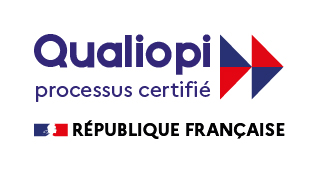Because the bonds have a 5-year life, there are 10 interest payments (or periods). The periodic interest is an annuity with a 10-period duration, while the maturity value is a lump-sum payment at the end of the tenth period. The 8% market rate of interest equates to a semiannual rate of 4%, the 6% market rate scenario equates to a 3% semiannual rate, and the 10% rate is 5% per semiannual period.
- The issuer can use cash to buyback bonds otherwise they will be converted to equity share base on the conversion rate which is predetermined.
- Bonds represent an obligation to repay a principal amount at a future date and pay interest, usually on a semi‐annual basis.
- By the end of third years, the discounted bonds payable balance will be zero, and bonds carry value will be $ 100,000.
- Also, a bond might be called while there is still a premium or discount on the bond, and that can complicate the retirement process.
You may wonder why don’t we discount cash flow bonds value which will be paid at the end of 3rd year. When the coupon rate equal to the effective interest rate, the present value of bond value and annual interest is equal to the par value. Bonds represent an obligation to repay a principal amount at a future date and pay interest, usually on a semi‐annual basis.
Convertible Bonds Advantages
Under both IFRS and US GAAP, the general definition of a
long-term liability is similar. However, there are many types of
long-term liabilities, and various types have specific measurement
and reporting criteria that may differ between the two sets of
accounting standards. With two exceptions, bonds payable are
primarily the same under the two sets of standards. Municipal bonds are a specific type of bonds that are issued by governmental entities such as towns and school districts.
The amount of premium amortized for the last payment is equal to the balance in the premium on bonds payable account. See Table 4 for interest expense and carrying value calculations over the life of the bonds using the effective interest method of amortizing the premium. At maturity, the General Journal entry to record the principal repayment is shown in the entry that follows Table 4 . When a corporation prepares to issue/sell a bond to investors, the corporation might anticipate that the appropriate interest rate will be 9%.
- In simple words, bonds are the contracts between lender and borrower, the amount of contract depends on the face value.
- This method is permitted under US GAAP if the results produced by its use would not be materially different than if the effective-interest method were used.
- The 8% market rate of interest equates to a semiannual rate of 4%, the 6% market rate scenario equates to a 3% semiannual rate, and the 10% rate is 5% per semiannual period.
So, for semiannual payments, we would divide 5% by 2
and pay 2.5% every six months. When performing these calculations, the rate is adjusted for more frequent interest payments. If the company had issued 5% bonds that paid interest semiannually, interest payments would be made twice a year, but each interest payment would only be half an annual interest payment. Earning interest for a full year at 5% annually is the equivalent of receiving half of that amount each six months. So, for semiannual payments, we would divide 5% by 2 and pay 2.5% every six months.
Journal Entry for Bond Issued at Discount
The interest payments will be the same because of the rate
stipulated in the bond indenture, regardless of what the market
rate does. The amount of interest cost that we will recognize in
the journal entries, however, will change over the course of the
bond term, assuming that we are using the effective interest. The interest expense is calculated by taking the Carrying Value ($93,226) multiplied by the market interest rate (7%). The amount of the cash payment in this example is calculated by taking the face value of the bond ($100,000) multiplied by the stated rate (5%).
Recording Bond Issuance Journal Entries
Recording journal entries for bond issuances is essential in ensuring that your financial records are accurate and up-to-date. These benefits include increased financial stability, the ability to raise long-term capital without diluting existing shareholdings, and protection from interest rate fluctuations. Moreover, corporate bonds offer flexibility in raising debt capital, allowing companies to prioritize their debts over others. In the short term, company will be able to raise funds without issuing share equity.
When the bond is issued at par, the cash receipt from the bond issuance is equal to the par or face value of the bond. When a company issues bonds, they borrow money from investors who purchase the bonds at a fixed price. The account Premium on Bonds Payable is a cost benefits analysis for projects liability account that will always appear on the balance sheet with the account Bonds Payable. In other words, if the bonds are a long-term liability, both Bonds Payable and Premium on Bonds Payable will be reported on the balance sheet as long-term liabilities.
Today, the company receives cash of $91,800.00, and it agrees to pay $100,000.00 in the future for 100 bonds with a $1,000 face value. The difference in the amount received and the amount owed is called the discount. Since they promised to pay 5% while similar bonds earn 7%, the company, accepted less cash up front. They did this because giving a discount but still paying only 5% interest on the face value is mathematically the same as receiving the face value but paying 7% interest.
This method is permitted under US GAAP if the
results produced by its use would not be materially different than
if the effective-interest method were used. IFRS does not permit
straight-line amortization and only allows the effective-interest
method. Recall from the discussion in
Explain the Pricing of Long-Term Liabilities that one way
businesses can generate long-term financing is by borrowing from
lenders. Beyond FASB’s preferred method of interest amortization discussed here, there is another method, the straight-line method. This method is permitted under US GAAP if the results produced by its use would not be materially different than if the effective-interest method were used. IFRS does not permit straight-line amortization and only allows the effective-interest method.
Bond Carrying Amount
Before the bonds can be issued, the
underwriters perform many time-consuming tasks, including setting
the bond interest rate. As
we go through the journal entries, it is important to understand
that we are analyzing the accounting transactions from the
perspective of the issuer of the bond. For example, on the issue date of a bond, the borrower
receives cash while the lender pays cash. This example demonstrates the least complicated method of a bond issuance and retirement at maturity.
Why issue bonds instead of stock?
The company will then make periodic interest payments on the bonds until they reach maturity and the principal amount is repaid in full. The convertible bonds will allow the company to raise a fund with a lower interest rate as the investors saw the convertible options as the other benefit. Reverse convertible bonds allow the company to buyback the bonds or allow it to be converted to share at the maturity date. The issuer can use cash to buyback bonds otherwise they will be converted to equity share base on the conversion rate which is predetermined. It is the most common type of convertible bond, the company grant right to the holder to convert the bonds to common share base the conversion rate which is calculated in advance. Moreover, the holders will receive interest base on the coupon rate and it comes with the fixed maturity date when holders can receive the nominal value.
Remember that the bond payable
retirement debit entry will always be the face amount of the bonds
since, when the bond matures, any discount or premium will have
been completely amortized. At some point, a company will need to record bond
retirement, when the company pays the obligation. For example, earlier we
demonstrated the issuance of a five-year bond, along with its first
two interest payments. If we had carried out recording all five
interest payments, the next step would have been the maturity and
retirement of the bond. At this stage, the bond issuer would pay
the maturity value of the bond to the owner of the bond, whether
that is the original owner or a secondary investor.




